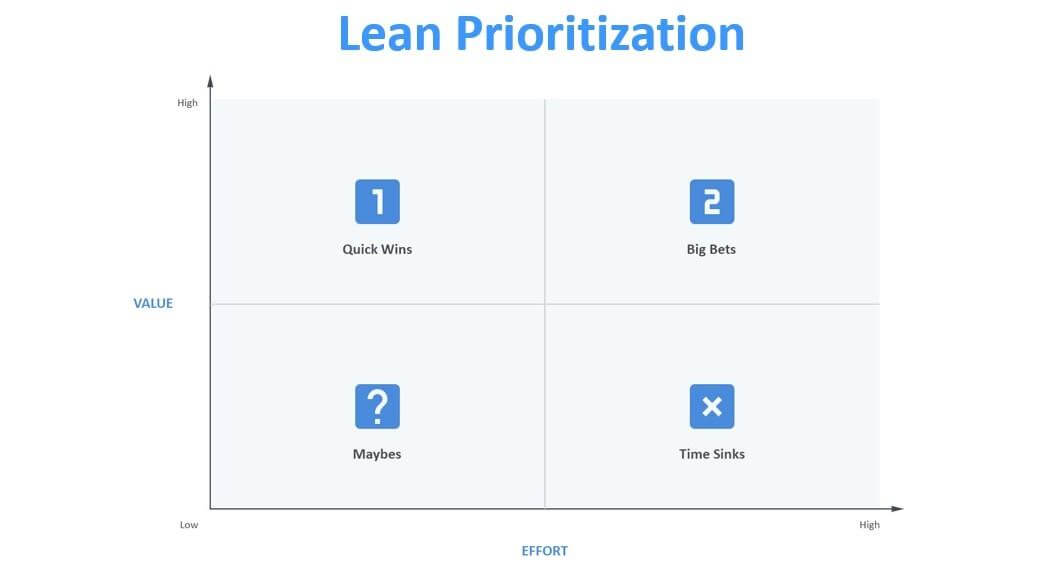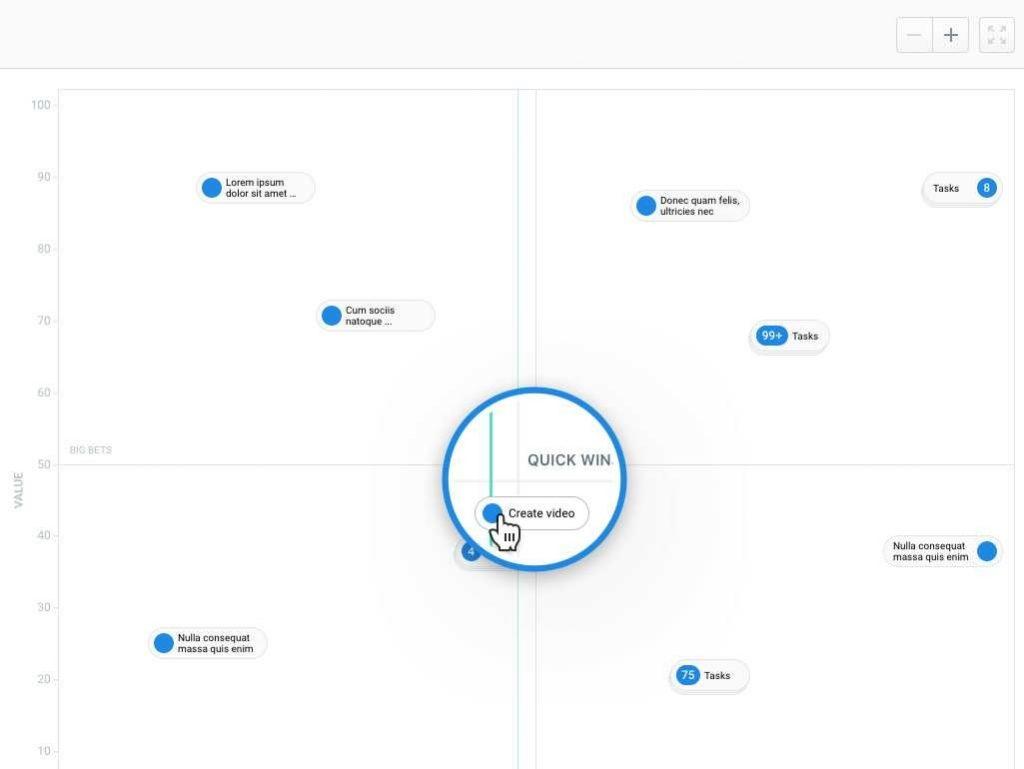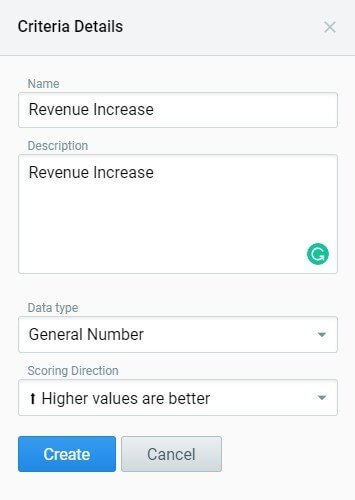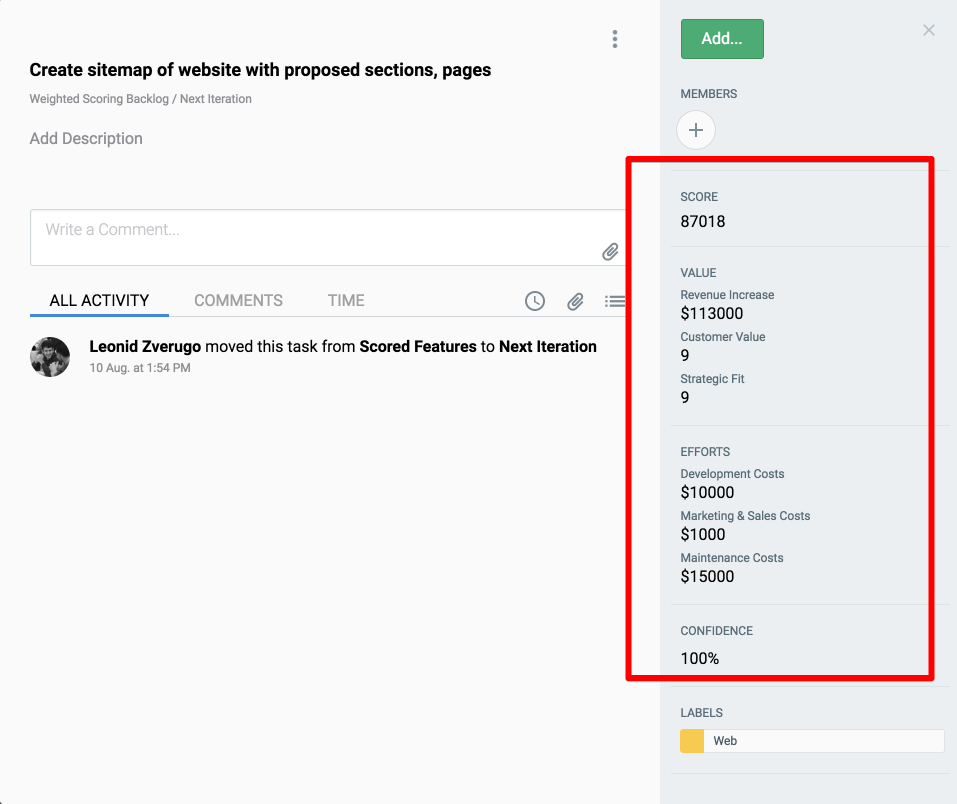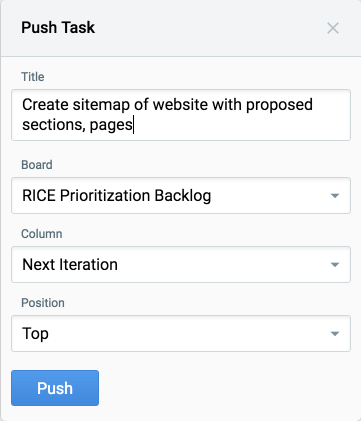How to Prioritize Product Features? Guide for Product Managers
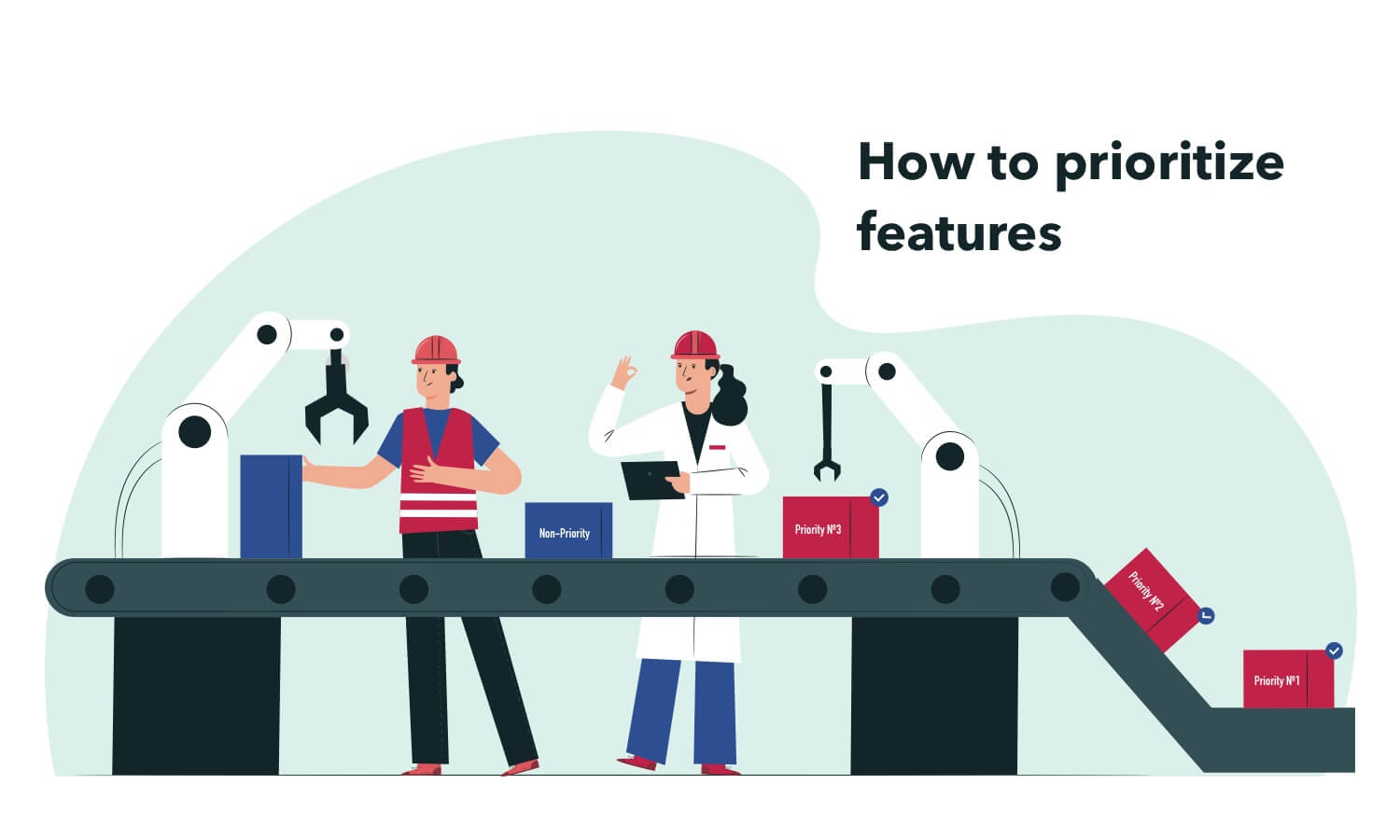
Choosing the right features for development, filtering the most important of them and skipping less urgent ones – it is all about the Art of Prioritization.
How to find the evaluation criteria necessary for your product and strategic growth metrics? How to offer more value to customers and establish all internal processes inside the team with the help of prioritization? Let’s dive into the guide for prioritization and the example of how it works in Hygger.io.
Product feature prioritization for managers is about making decisions and choosing between different options. There is no right for mistakes here. That’s why any product manager should be concentrated and focused on the main issues. Always.
Why is prioritization vitally important?
Managing the product” means deciding what we do to the product and then making it happen.
Ryan Singer – Product Strategy at Basecamp)
Product management consists of 3 main blocks:
- User research
- Planning
- Execution
At the planning stage, we model the image of the future product. It is rather important to use such “materials” that will improve the performance of our product, its profitability, its UX, UI and so on.
Let’s be honest – many product managers are keen on such a creative process.
Distractions literally kill startups. Building stuff for the sake of building it is startup suicide. So having a rigorous and honest prioritization process for feature development is critical to controlling distraction and eliminating waste.
Ben Yoskowitz, the author of Lean Analytics, investor, 500+ startups mentor
It’s rather a big problem to spend invaluable team’s time to develop features that no one needs. This problem is especially topical for start-ups with limited time and budget.
The Next Feature Fallacy: the fallacy that the next feature you add will suddenly make people want to use the entire product.
Joshua Porter – HubSpot UX director
It is worth here to remind the intuition – our best “helper” that constantly whispers: “This is the feature that will definitely rock!” and adds: “And this one will totally rock where the first feature could not.”
We work with such features and then wonder why nothing has been changed in the product.
Marty Cagan from the Silicon Valley in his book “Inspired” has identified three types of product managers:
- Backlog administrator – when CEO is responsible for decisions.
- Roadmap administrator – when stakeholders are responsible for decisions.
- Real product manager – decisions are made by a product manager. The process described below will be useful right for this kinf od managers. If you are a manager of a different type – think about changing the job because changing CEO mindset is quite difficult.
In the reality of severe competition and uncertainty, that both start-ups and businesses face, it is vitally important to be able to properly prioritize.
Where to start?
Feature prioritization should flow from the overall product strategy.
Determining product strategy at the very start will inform your product roadmap, satisfy your customers’ needs and help with the other internal company needs. Be sure, if you don’t have a clear strategy and a smart product roadmap, then it’s not a time for prioritizing features yet.
That’s why before jumping into working with features within your smart tool for product management, pay attention to revise your strategy and the roadmap.
The process of prioritization in Hygger
Let’s highlight the process that helps us in Hygger in choosing the right features and making the product prioritization better.
In fact, everything is quite simple: we set goals for 2 months, choose metrics for control, collect and select ideas that can improve these metrics. Next, we conduct a Lean prioritization of ideas, apply features scoring, and finally write the task for the features that have won. And that’s all – the features are ready for development.
If systematize this, we get the following:
- We formulate the company’s goals for 2 months ahead
- We choose metrics according to the goals
- We collect and organize ideas
- We carry out continuous Lean-prioritization
- We score the features
- We detail the features and add them to the queue.
Goals formulation
We have a 2-week trial and want to increase the number of companies that purchase a paid subscription after the trial. This is our main goal for the next 2 months. We also need to differentiate from competitors because there are about 500 systems for project management on the market.
Choosing metrics
We use basic and additional metrics. All these metrics are in our zone of influence and it’s rather important.
The basic metric is a trial-to-paid conversion.
Additional metrics are:
- Conversion of visitors into registration
- Activation (AHA moment)
- Retention
AHA-moment is the moment when the user has understood the value of the product or even used this value on the real task.
Each product has its own value. For example, successful messaging in Tinder or viewing a non-empty feed for some time on Facebook.
The users who have experienced this value can be called activated users. Our task is to increase the number of such users. Facebook found out that activation is affected by the number of friends – the more friends you have, the bigger your feed is and the more time a user hangs in the feed and looks at ads.
Collecting ideas
Here are the main sources of feedback for our product:
- Customer support (Intercom.com, Zendesk.com)
- Inspectlet.com (or AppSee for mobile)
- NPS (How likely are you to recommend us to your friends and colleagues?, Wootric.com, Satismeter.com, Nicereply.com)
- Product analytics (Amplitude.com)
- The analysis of competitors (Feedly.com)
- Interviews (Custdev.com, Temi.com, Rev.com)
- Experiments and A/B testing (Optimize.google.com, Optimizely.com)
- Reviews (App Store, Google Play, Capterra.com, Appfollow.com, Appanie.com)
- UX testing (Usertesting.com)
- Surveys (Typeform.com)
- Quizzes (LeadQuizzes.com)
Organizing ideas
Since we have a lot of feedback, we have to constantly maintain order in our product backlog. This helps us quickly find the right things and not be distracted by minor ones.
How we structure our product backlog:
- by components (backend, frontend, API, mobile apps)
- according to the field of application (UX, marketing, tech debts, bugs)
- flag the most strategic and important
- link insights and features to understand features relevance.
In addition, we link all the requests of customers with features. For example, a feature request has been received from Intercom. The support manager adds it to the board, and the product manager links this request to the feature. Thus, we estimate how much this particular feature will be in demand.
Lean prioritization or Value/Effort prioritization
Periodically, as we accumulate new ideas, we evaluate them using the Lean Prioritization method. This is a simple 2×2 matrix with two axes – complexity and value:
- Value – what contribution does the feature give to the product.
- Complexity is the effort required to implement a feature.
In Hygger, a visual representation of a backlog board is a Backlog Priority Chart. This tool helps to optimize product priorities by defining important and less important tasks.
- First, we use Quick Wins, features that give a lot of value but which can be very quickly realized.
- Next – Big Bets. These are features that can bring great value, but they are difficult to implement.
- Then – Maybes – tasks and features that do not bring much value, but are easily implemented. They can be fully realized later.
- And, finally, Time Sinks. These features do not need priority and we can skip them.
Value is understood in different ways in each product. In our case, features get Value if they:
1.Improve the trial-to-paid conversion (metrics movers)
2. Help to attract new users (Aha-moment)
These are features that help us catch new users during onboarding. But do not forget about the fact that most users “fall off” on the second day. For example, in SaaS, the excellent indicator for day 1 retention is 15%. It means that 85% of people simply leave on the second day. Therefore, here you should think about features that many new users will see as close to the time of registration.
3. Help to keep current users
Customers have bought a subscription and now ask to do some feature. We do not “rush” blindly do everything in a row. We accumulate statistics for each feature – how many customers asked for it. And then we do the most popular features.
4. Add values to the product and separate us from competitors
There are about 500 project management systems on the market. To survive and succeed, we need to do something completely new, desirably to multiply the life of users or to reduce the costs by several times. Here we are looking for features that can give us a competitive advantage, they will create a reason why customers of competitors will come to us. This competitive advantage should be unique, difficult to repeat and, ideally, not reproducible.
Planning Poker
To evaluate ideas, we use Planning Poker:
- Meet altogether
- A leader takes an idea and the group discusses it
- Each participant evaluates the idea according to the Fibonacci sequence
- Then the Leader opens all the cards
- People who put max and min explain their decision
- In the end, we try to find consensus and then move on to the next idea.
Weighted Scoring
We score not all features, but those that have won in Lean Prioritization, because scoring is quite a labor-intensive act.
We evaluate each feature according to the selected criteria, on a scale from 0 to 10. Next, we multiply these values by the weights and get a final numerical score, which allows us to compare features to each other.
Criteria for scoring
Here are the different criteria that you can use for scoring:
- Target metrics
- Increases income
- Helps to acquire new customers
- Helps to retain current customers
- Value for users
- Strategic value – does not provide now, but later will help with it
- Is it possible to solve the task within the available functionality
- Strong innovation
- Many competitors have it
- Is needed for many users
- How often is needed
- Time and cost of development
- Time and cost of implementation
- Confidence in success
- Expectation according to Kano
- Desired according to Kano
- Delighting according to Kano – wow-effect, value for PR
- Improves code (facilitate refinement and support)
- Pirate metrics (AARRR)
Weighted Scoring in Hygger
You can perform Weighted Scoring in Hygger. At first, you need to create your own criteria, each of it can have its own scale (0..10, any number, t-shirt size, USD, yes/no).
Then, you set weights for each criterion. You evaluate features by these criteria, so each feature is getting a score.
You get the table with a list of all features so you can choose the winners.
You Push features to Kanban or Scrum boards for development.
More ways to prioritize in Hygger: RICE & ICE Scoring
Hygger proposes to apply simple but useful RICE scoring and ICE Score model.
RICE Scoring
The method to prioritize ideas and features is widely popular. The acronym consists of 4 factors that we use to evaluate project ideas:
- Reach. It is measured in a number of people/events per time period. This factor is aimed to estimate how many people each feature or project will affect within a specific time period and how many customers will see the changes.
- Impact. It reflects what contribution does the feature give to the product.
- Confidence. If you think a project could have a huge impact but don’t have data to back it up, confidence lets you control that.
- Effort. Estimate the total amount of time a feature will require from all team members to move quickly and have an impact with the least amount of effort.
With a RICE scoring approach, you take your proposed features or initiatives, rank each of them using a Reach, Impact, Confidence and Effort, and then step back and use the scores you’ve come up with to decide which initiatives make the cut.
ICE Scoring
This prioritization method is used for feature prioritization all over the world as well.
According to the scoring model, you need to calculate the score per idea, according to the formula:
- Impact demonstrates how much your idea will positively affect the key metric you’re trying to improve.
- Confidence shows how sure you are about Impact. It is also about ease of implementation in some way.
- Ease is about the easiness of implementation. It is an estimation of how much effort and resources are required to implement this idea.
Prioritization techniques
Luckily, today you may use the variety of prioritization techniques and methodologies.
Daniel Zacarias has assembled 20 prioritization techniques into the collection and grouped them according to two properties: external/internal and quantitative/qualitative techniques.
*the picture from Foldingburritos
The example of an external quantitative technique is the Kano model. An example of the internal quantitative technique is Lean Prioritization that was described above.
You may study and use the other prioritization techniques. The most interesting among them are the following:
- MoSCoW prioritization technique
- Opportunity Scoring methodology
- Value vs Cost method
- Value vs Complexity method
- Quality Function Deployment
- KJ method
- Speedboat technique
- Feature buckets method
- Story Mapping visual methodology
- “Prune the product tree” method
- Buy a feature gaming method
- Pareto’s rule
You may also find some more interesting methodologies. Try them and you will be able to work with the most complicated set of features and will always know how to set priorities.
Conclusion
So, what are the results that this process brings?
- The degree of influence of gut feeling in decision-making has been decreased
- Return HIPPO (highest paid person’s opinion)
- Strategic indicators are growing steadily
- Our customers get more value per unit of time
- The team understands WHY we are creating specific features
- Minor ideas are being hidden and do not irritate. Anyway, 80% of ideas will never be realized.
How do you choose features for development? Would you like to add or replace something? Feel free to leave your comments here.

